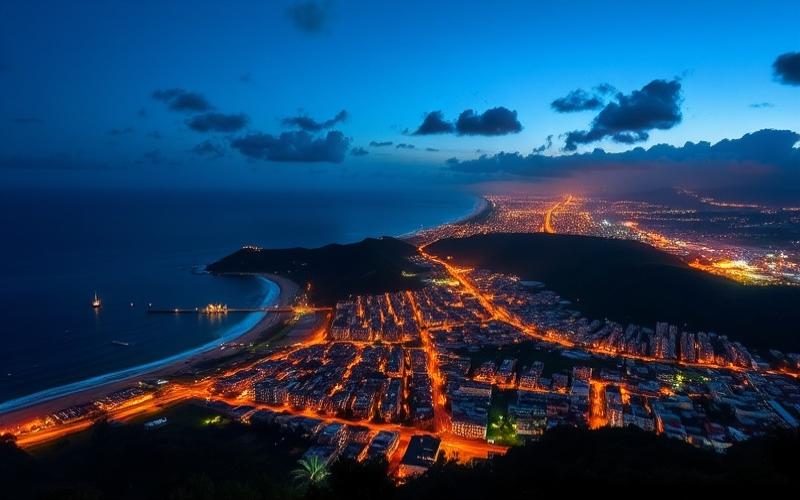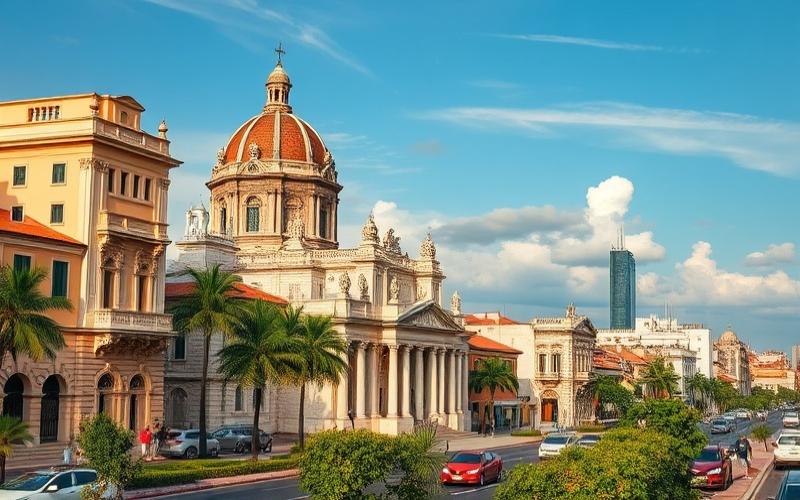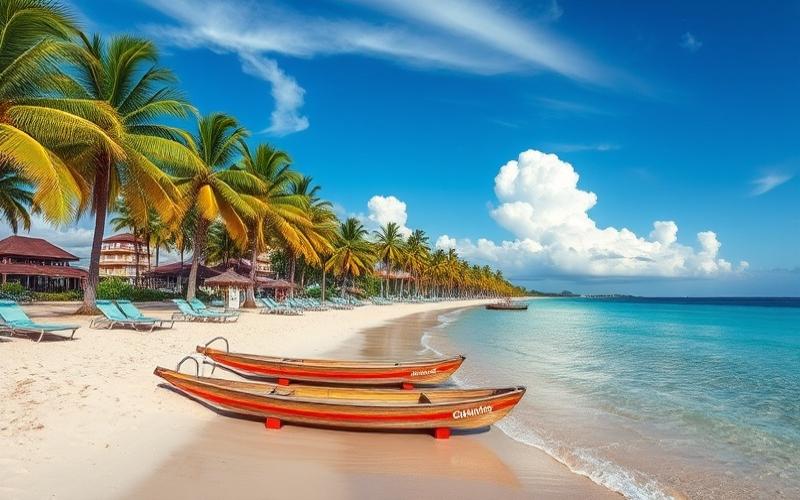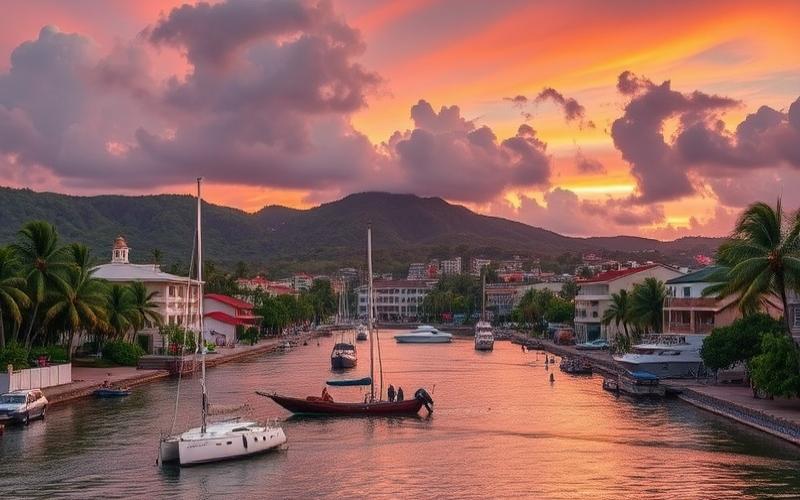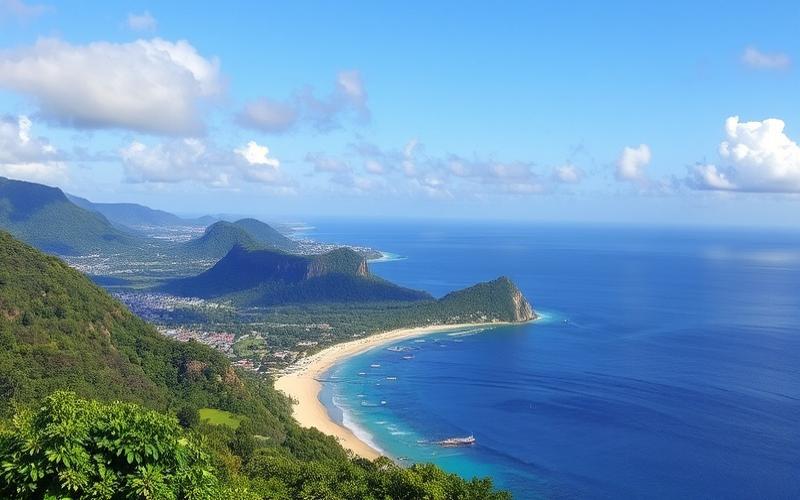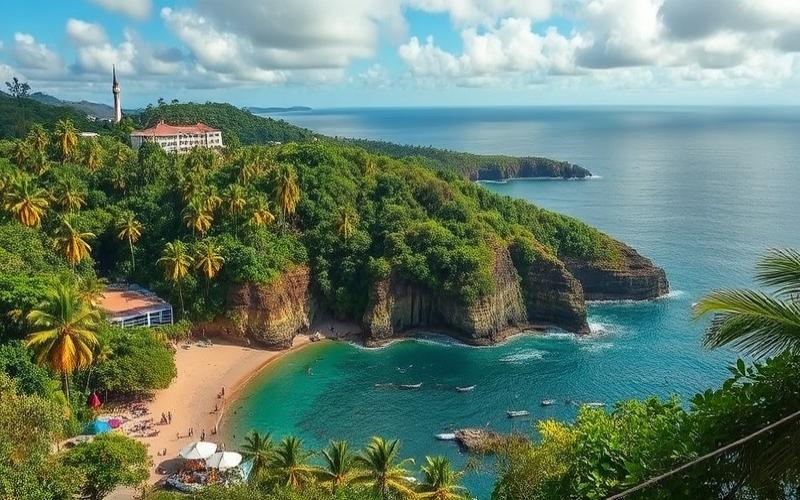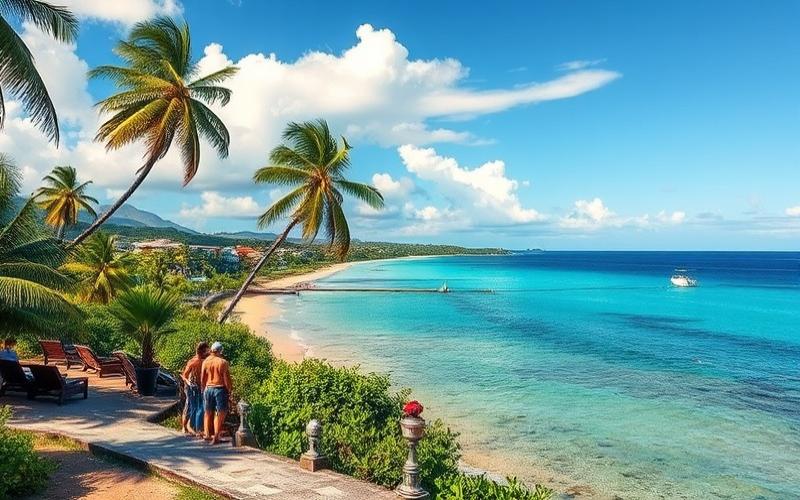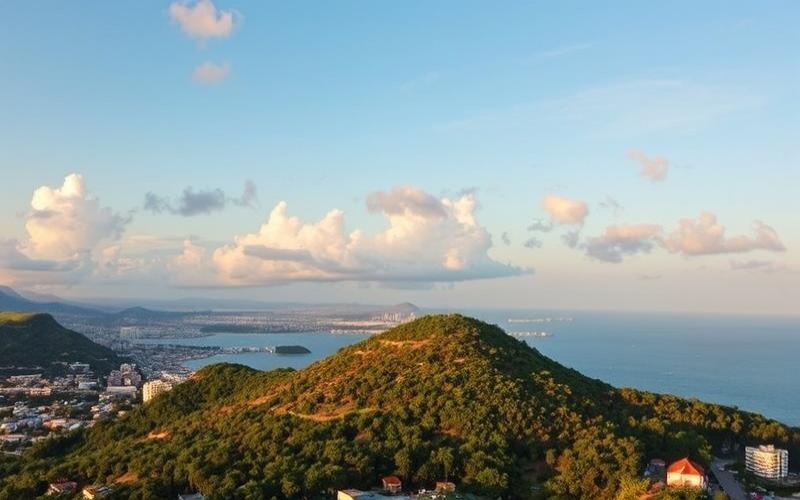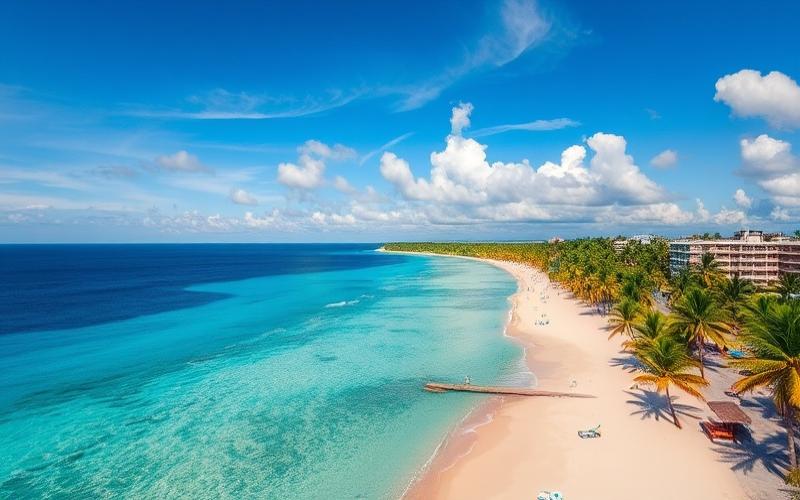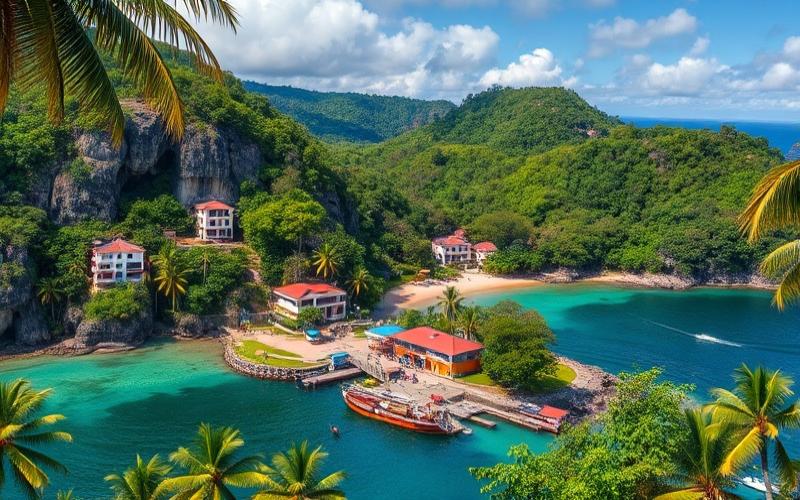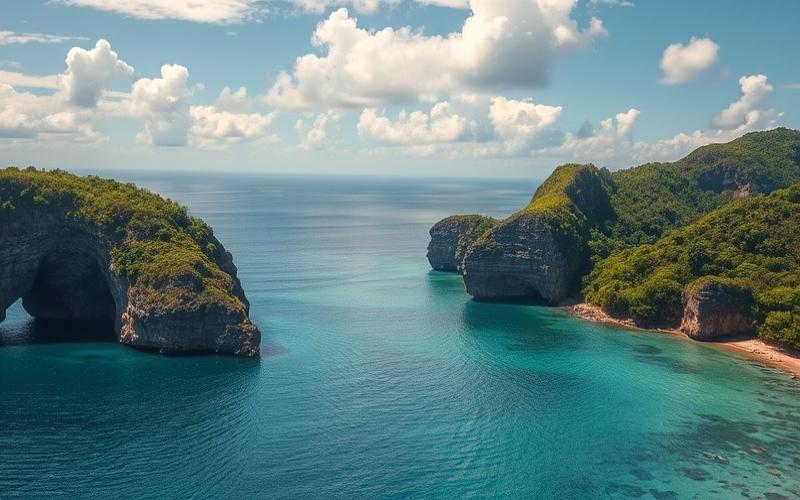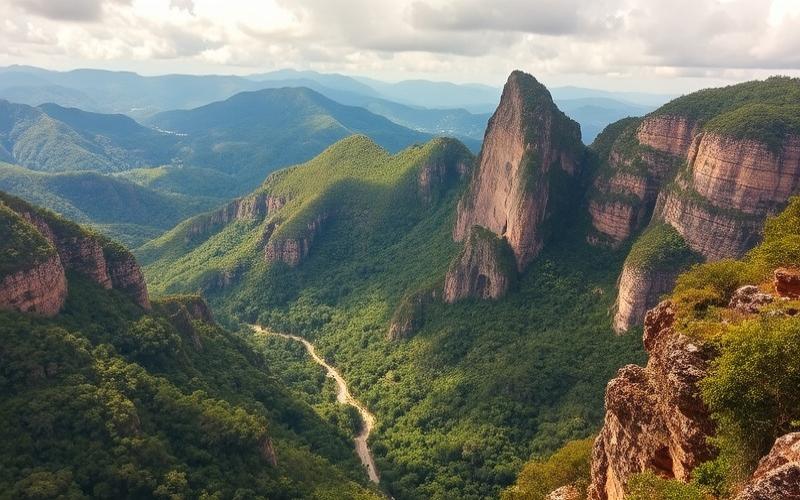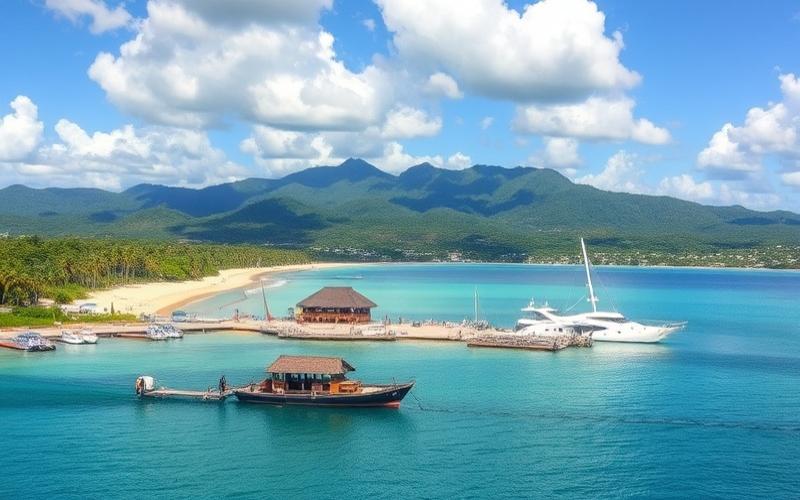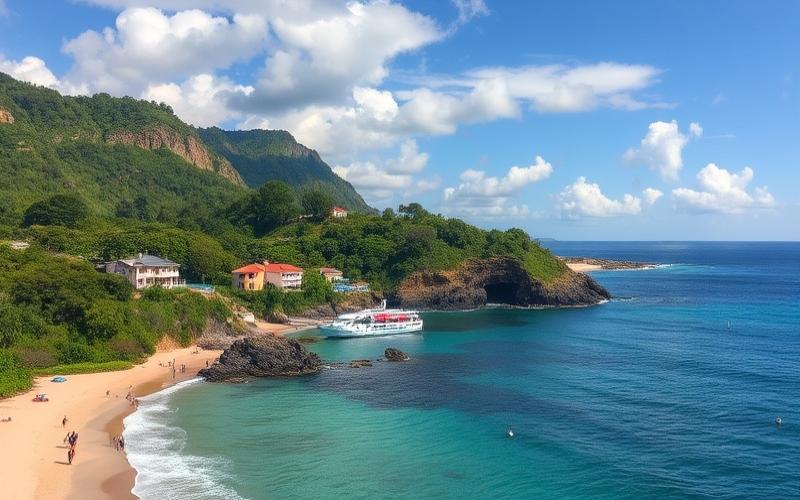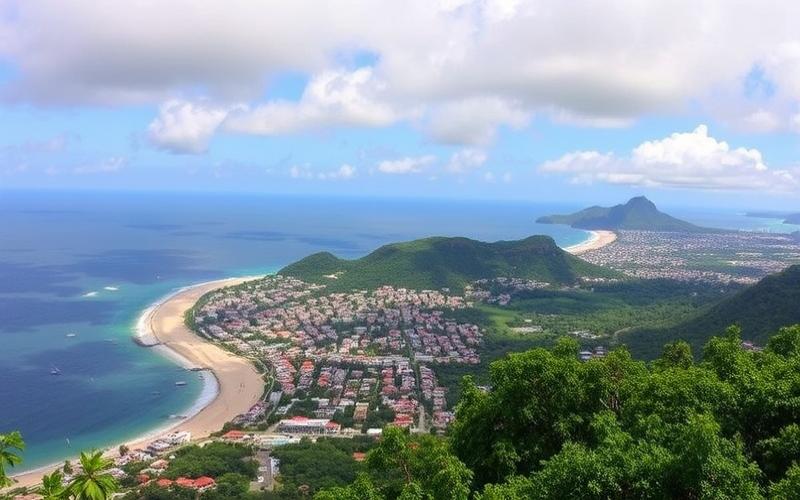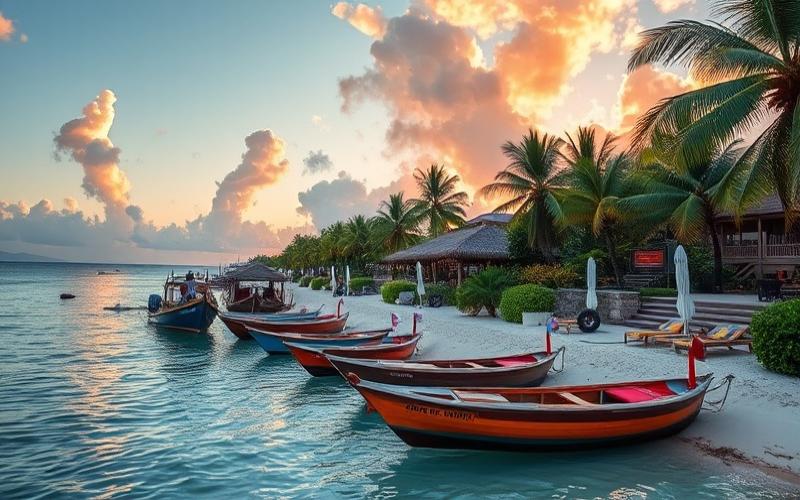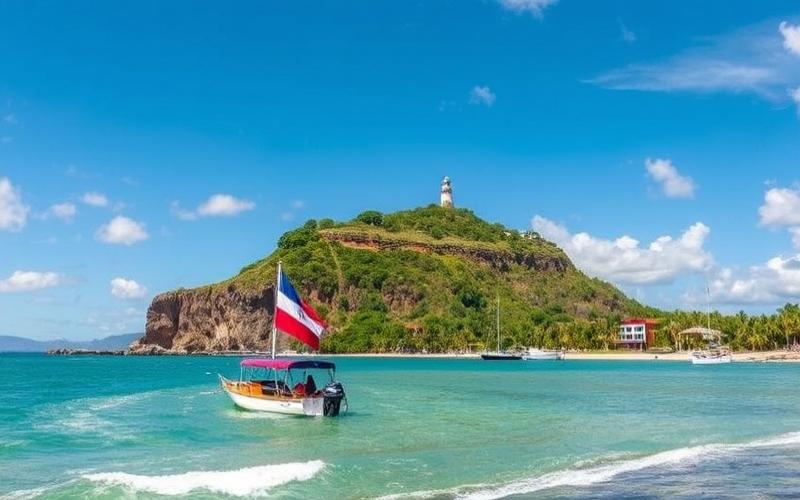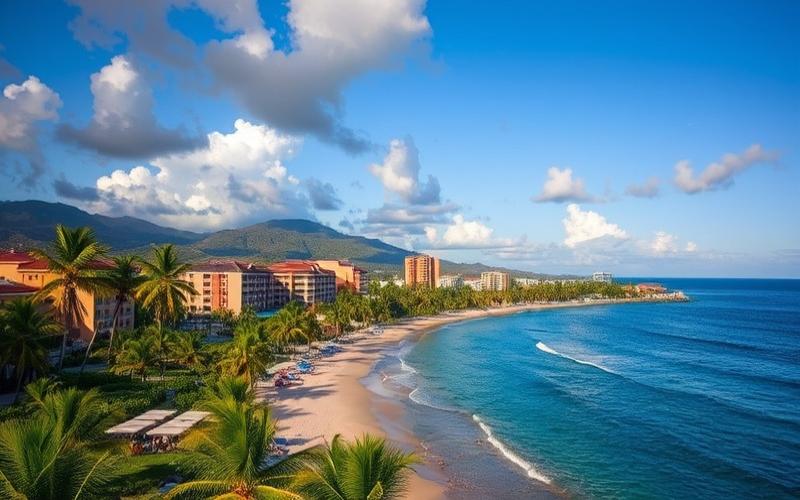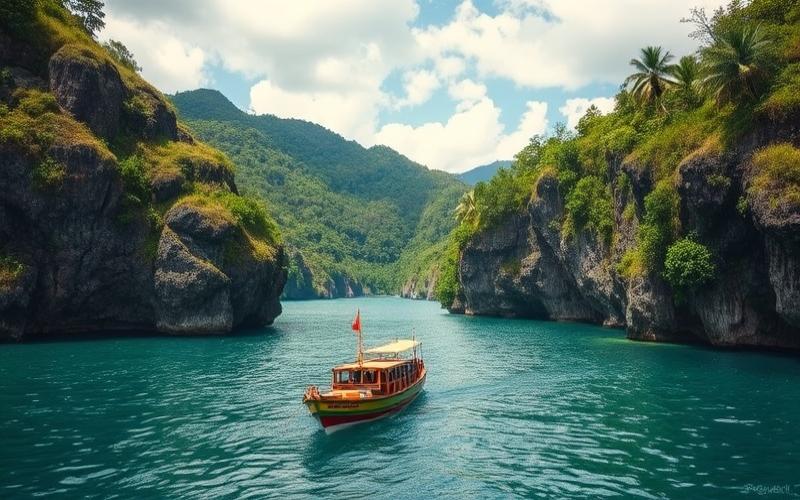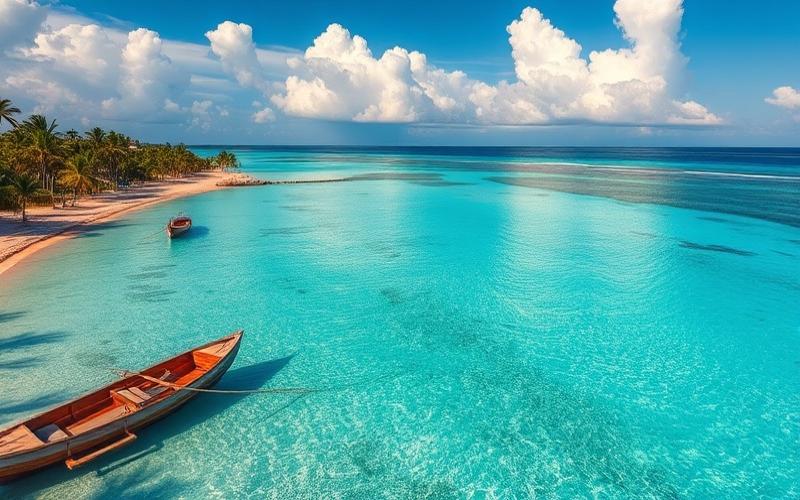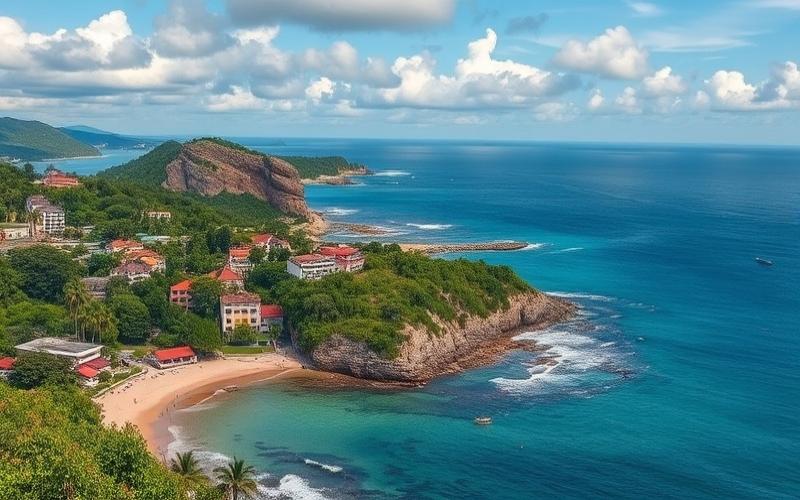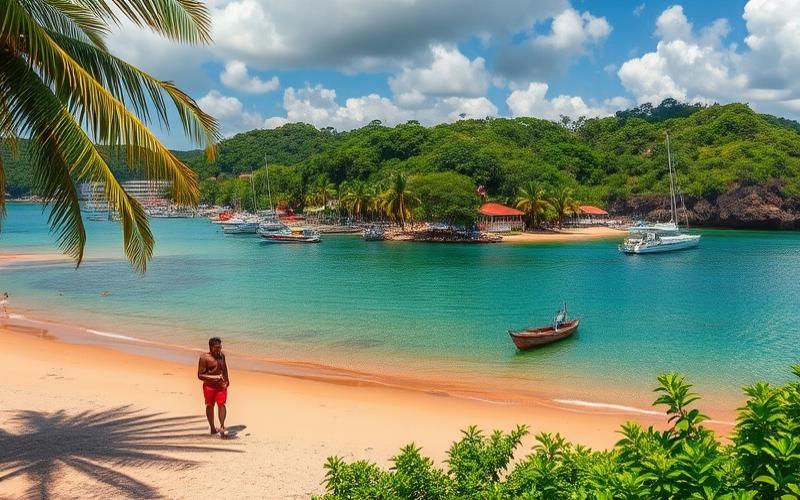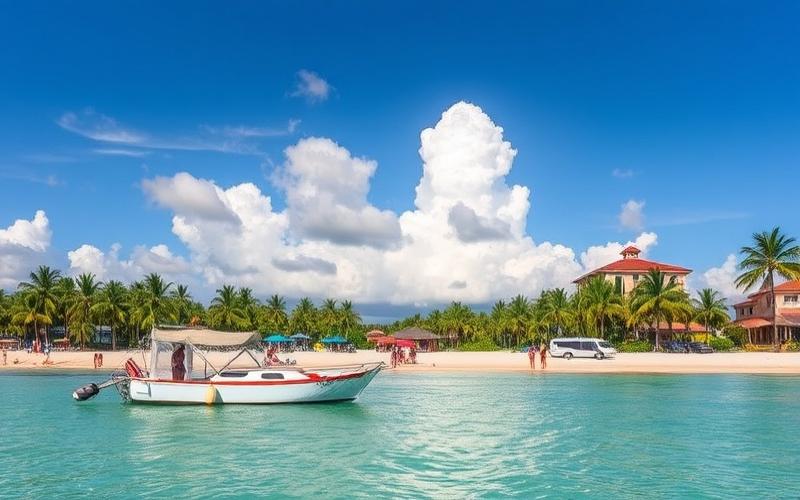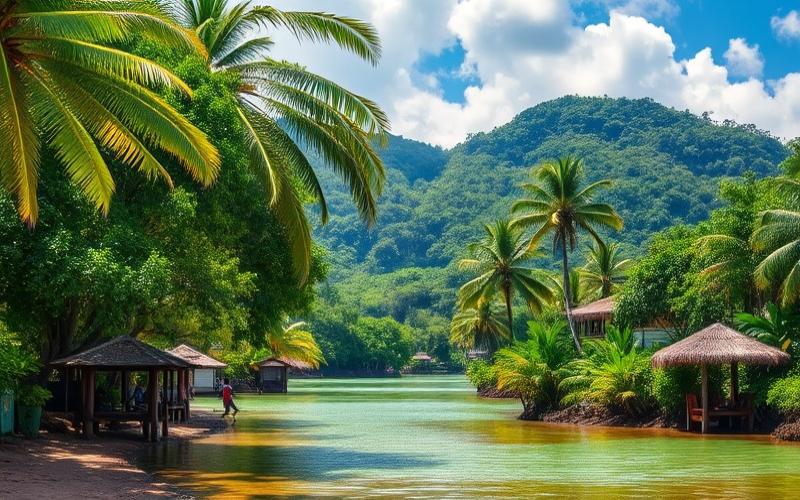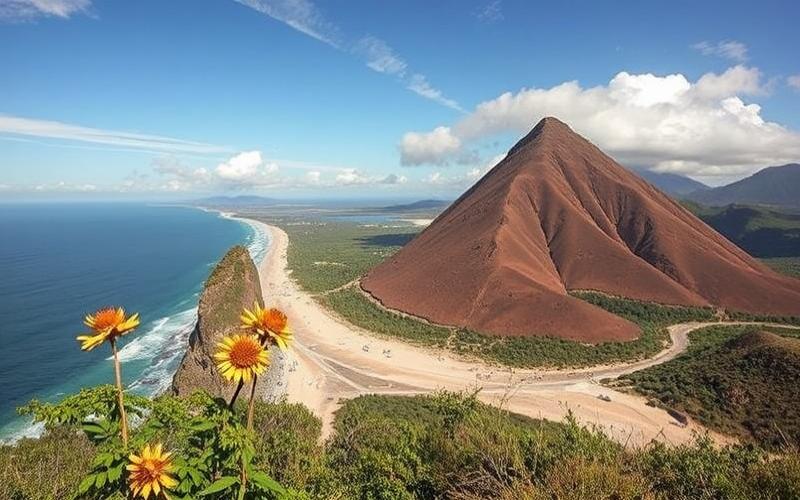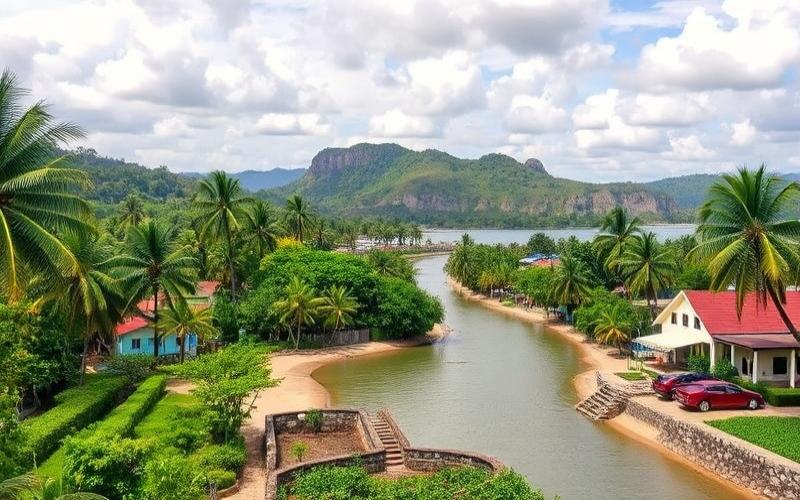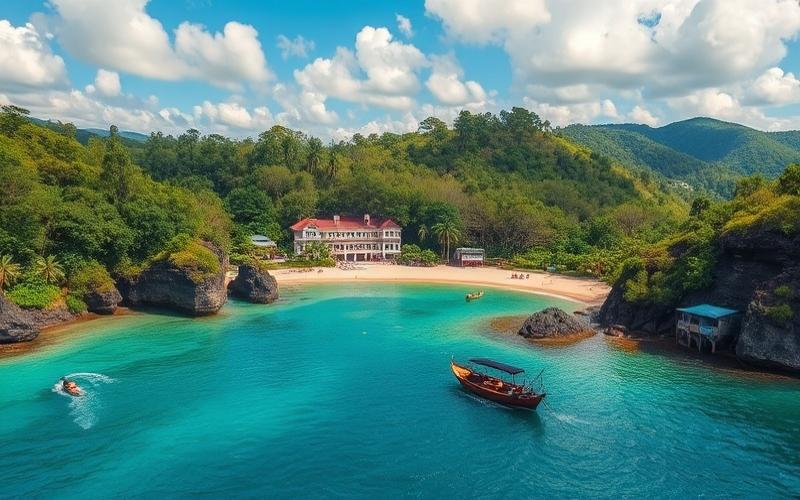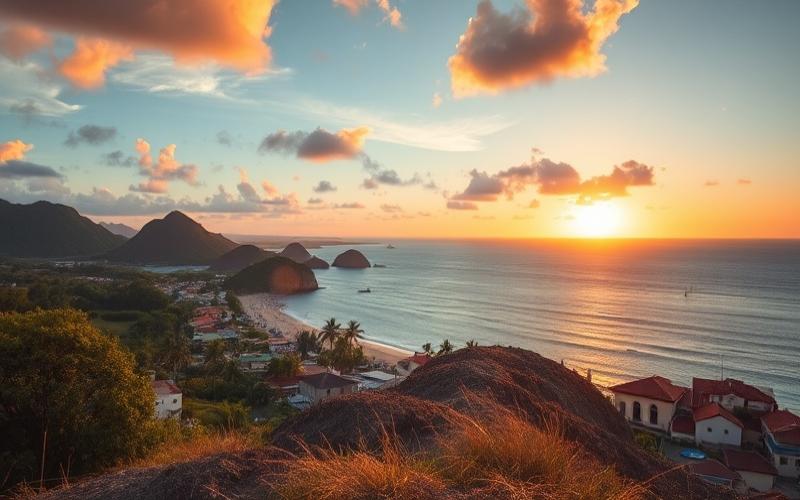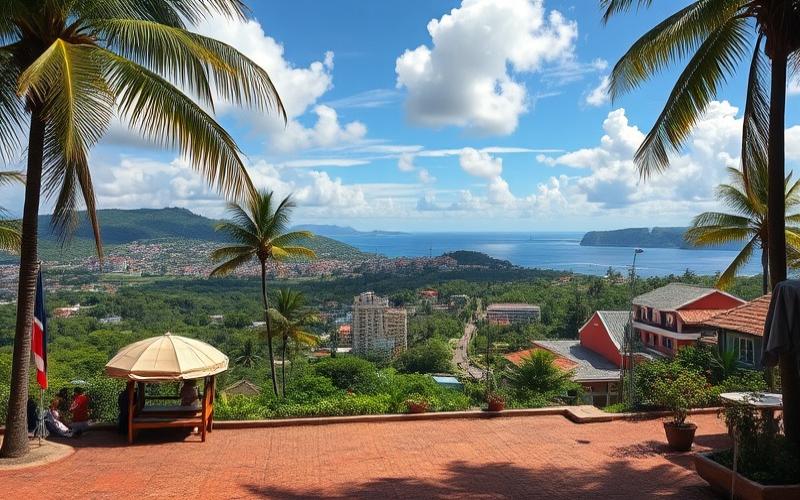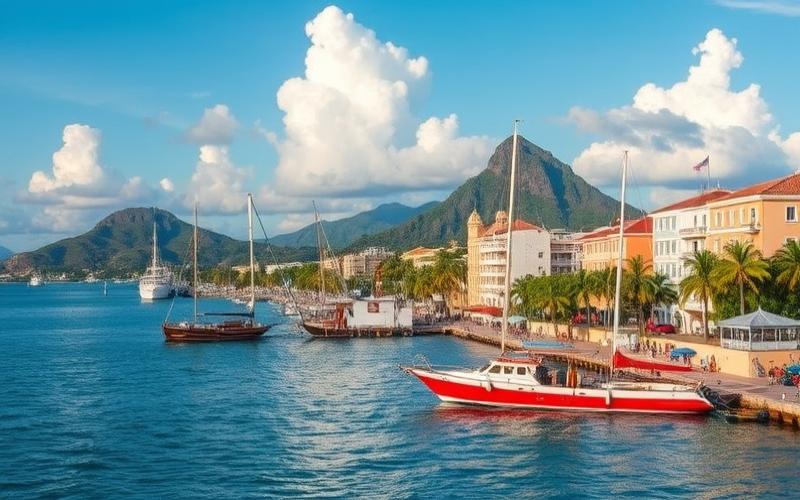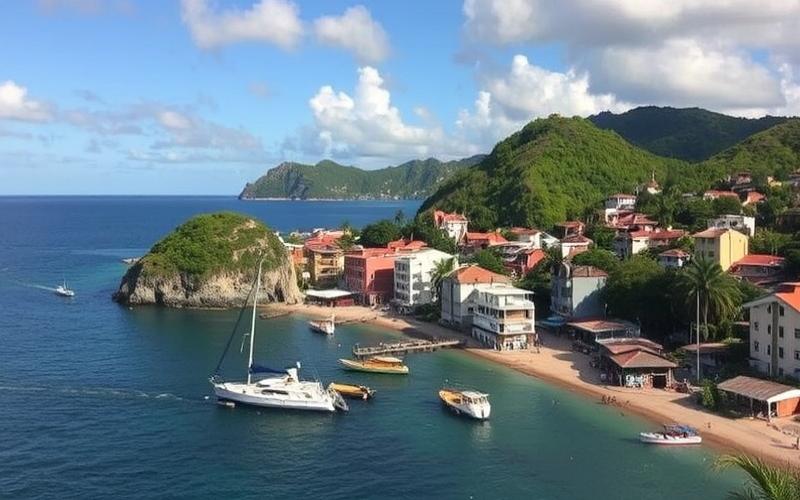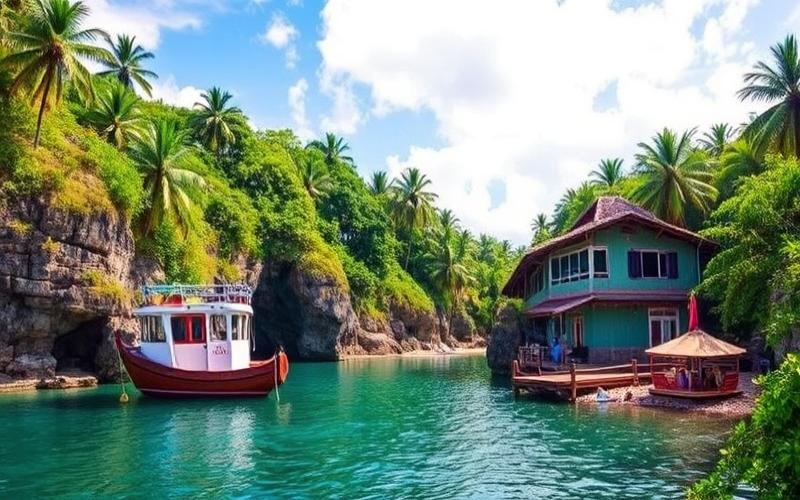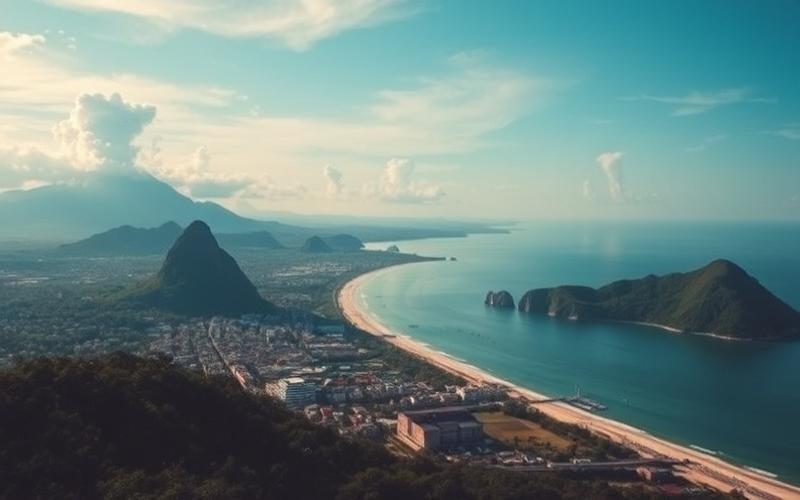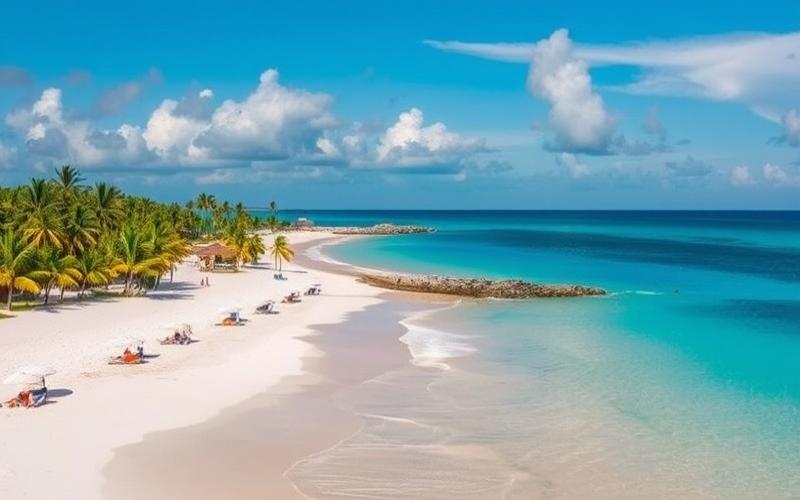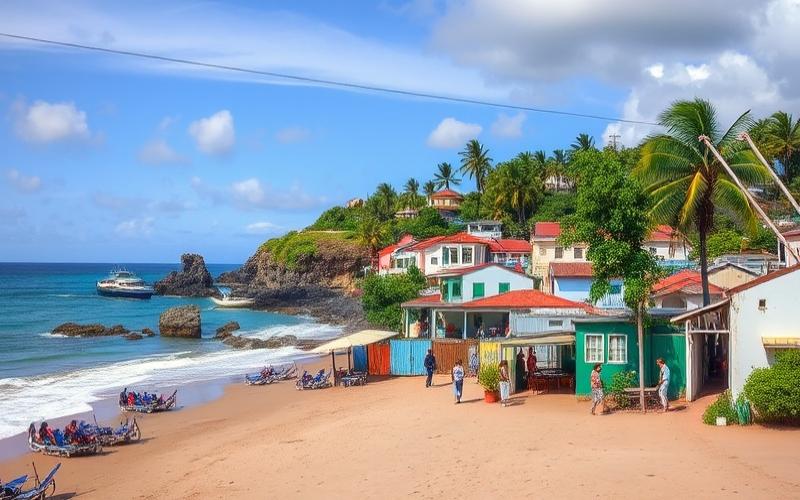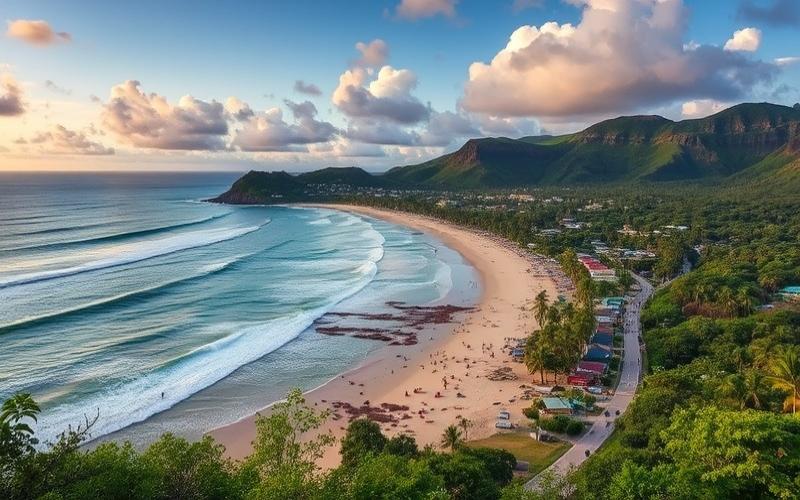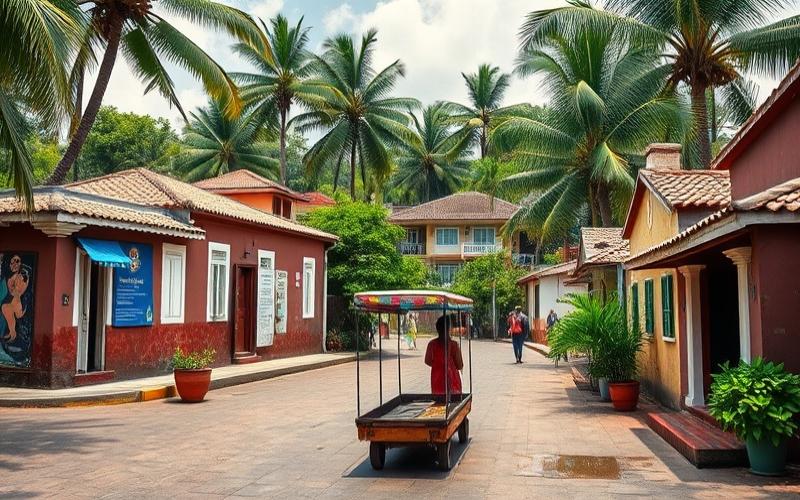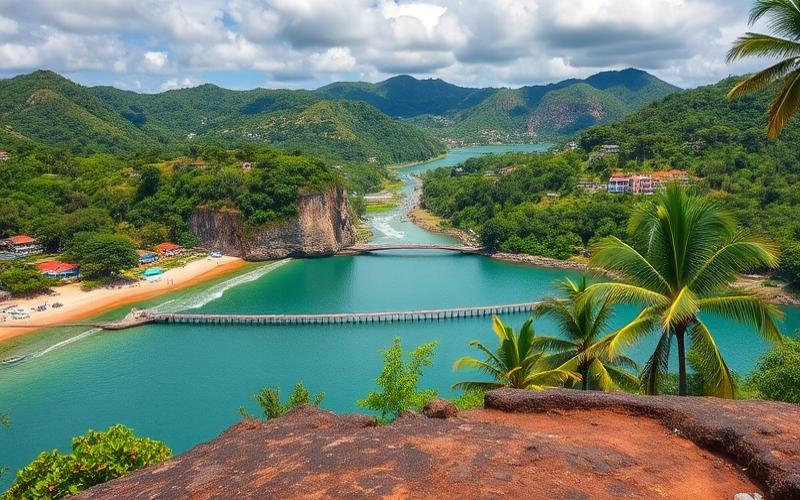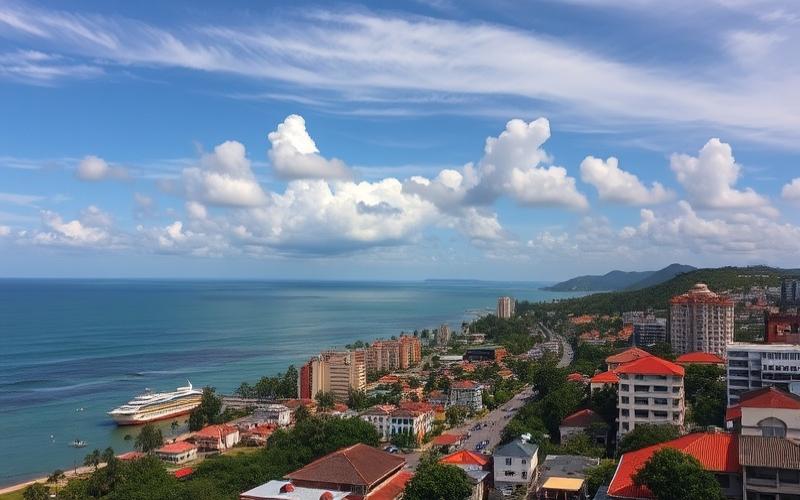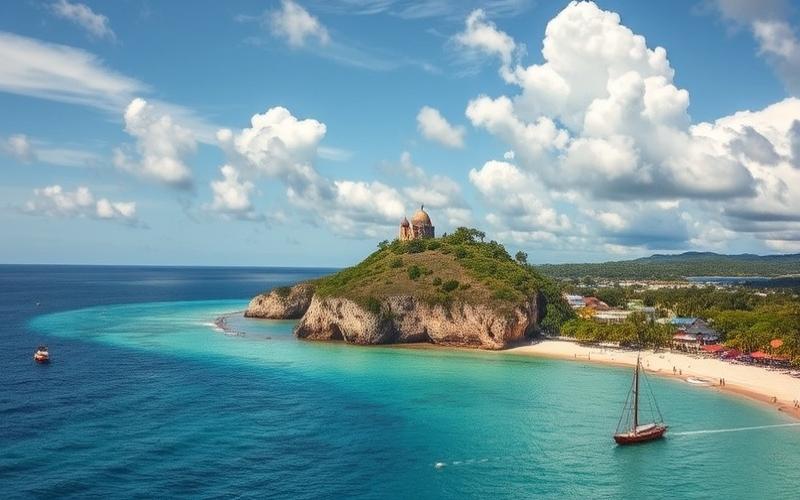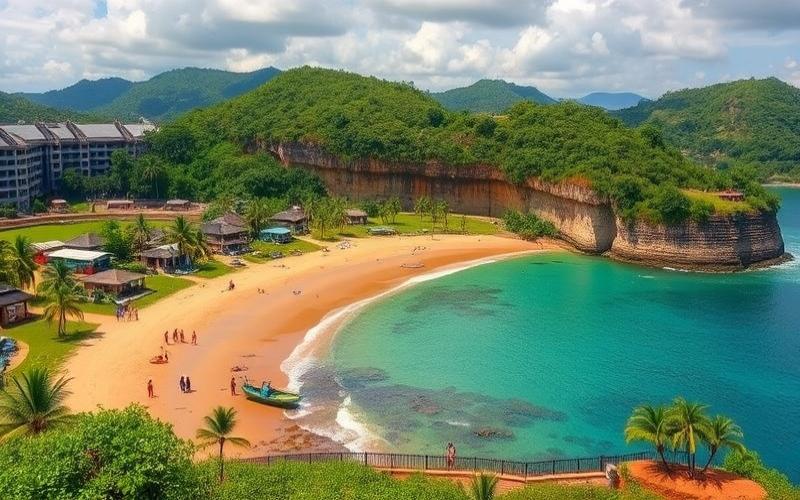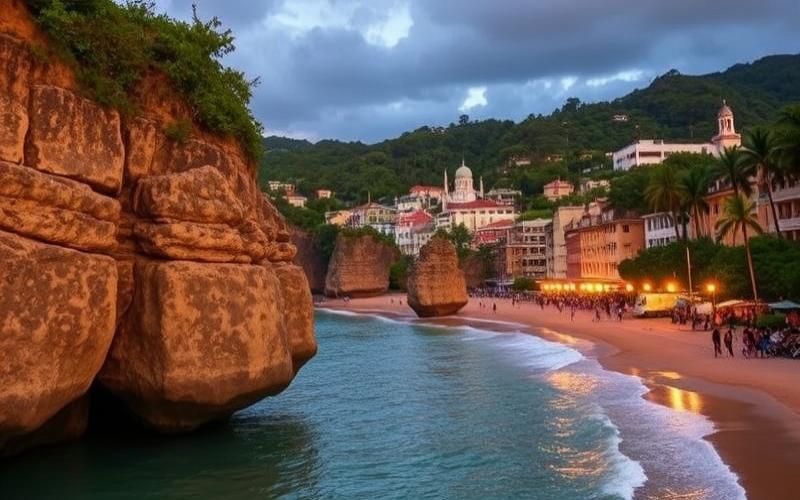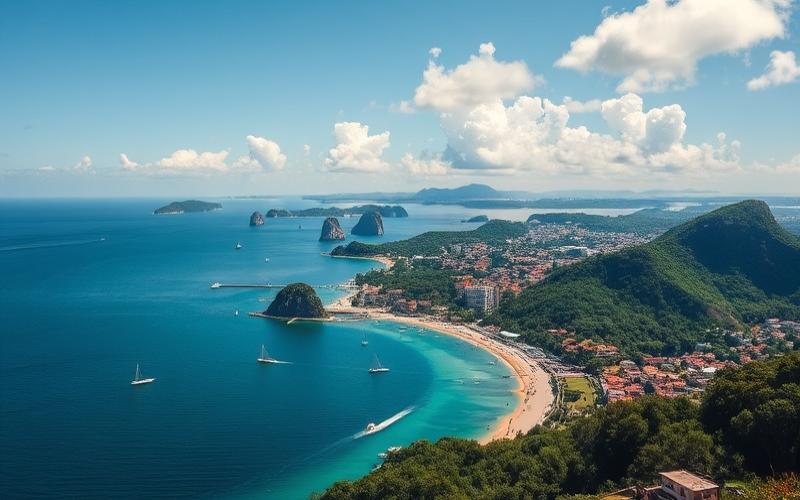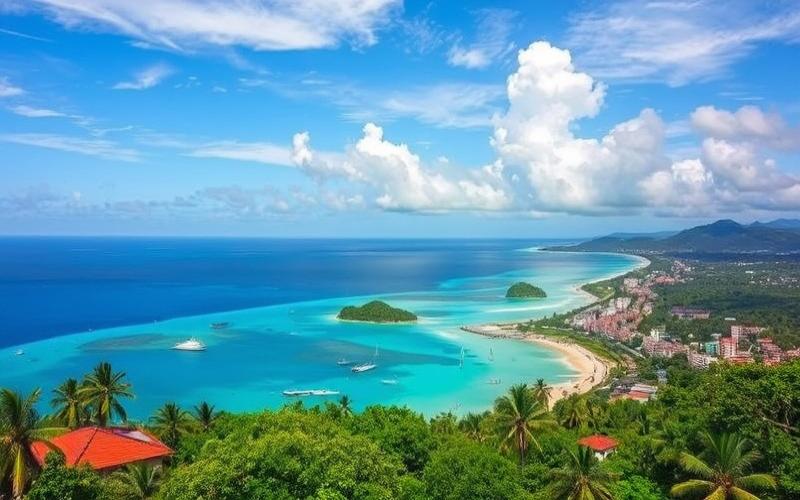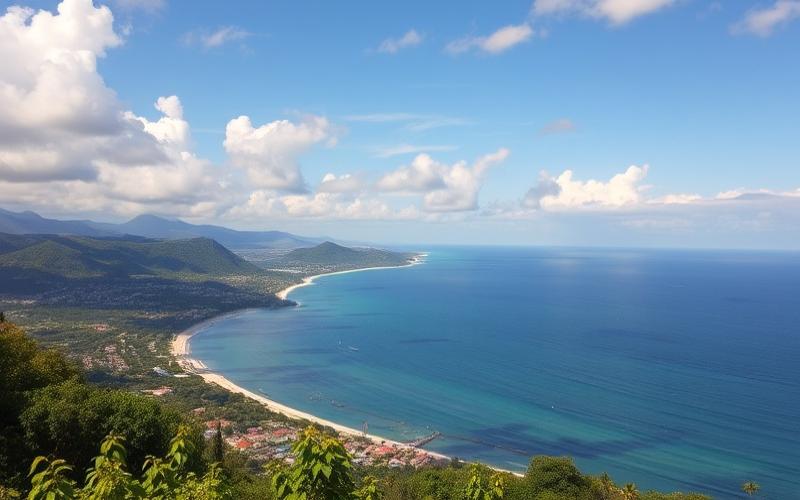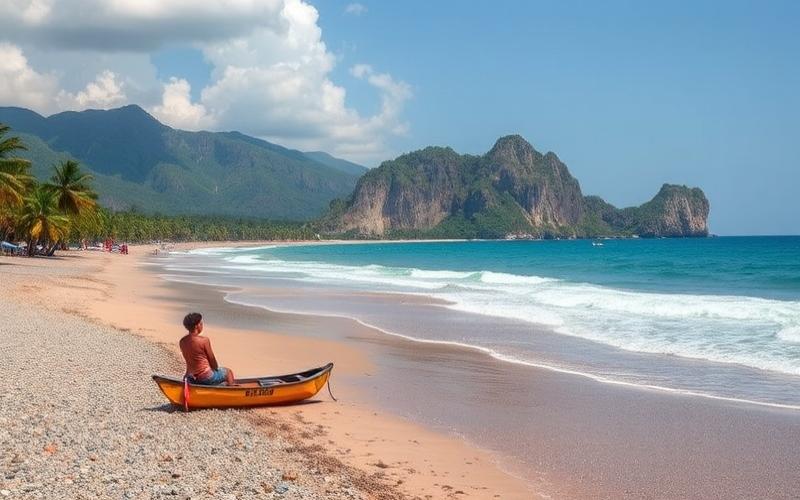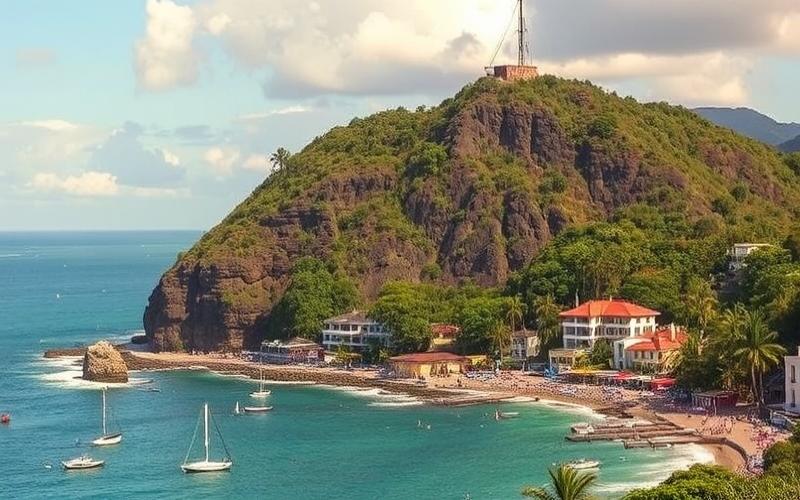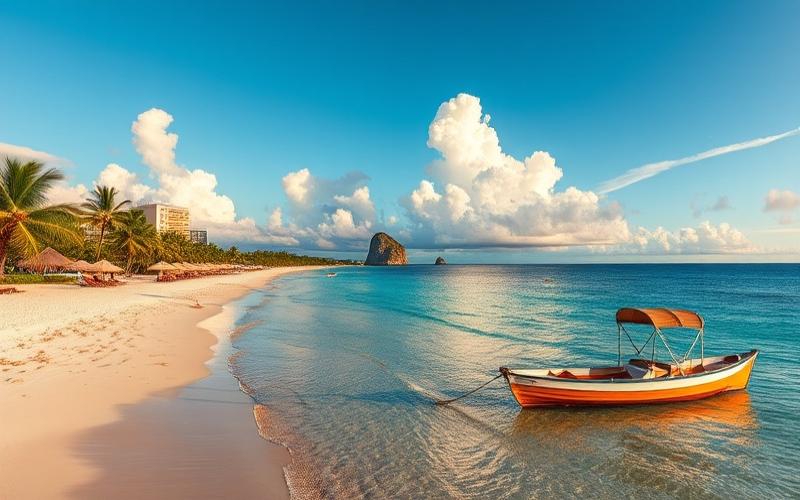
 Published on and written by Cyril Jarnias
Published on and written by Cyril Jarnias
The Dominican Republic has become a prime destination for international real estate investors in recent years. With its white sand beaches, tropical climate, and affordable cost of living, the country is attracting more and more foreign buyers seeking a second home or rental investment. However, real estate prices vary considerably from one city to another. Let’s dive into a comparative analysis of the real estate markets in major Dominican cities and explore price evolution prospects.
Significant Price Differences Between Dominican Cities
The Dominican real estate market is characterized by significant price disparities between different regions of the country. Coastal tourist areas generally display much higher rates than inland cities. Here’s an overview of average prices per square meter in the main cities:
Santo Domingo, the Dynamic Capital
Santo Domingo, the capital and largest city in the country, offers a diverse real estate market. In the renovated historic center, prices can reach $2,500 to $3,000 USD per square meter for luxury apartments. In sought-after residential neighborhoods like Piantini or Naco, rates range between $1,800 and $2,500/m². More popular areas like Villa Mella offer properties starting at $800/m².
Punta Cana, the Beach Paradise
Punta Cana, an internationally renowned beach resort, displays the highest prices in the country. Beachfront apartments in luxury residences can trade between $3,500 and $5,000/m². Villas with pools in secure complexes easily exceed $1 million. However, it’s possible to find more affordable properties in residential neighborhoods set back from the beach, starting at $1,500/m².
Puerto Plata, the Charm of the North Coast
On the north coast, Puerto Plata offers more moderate prices. Beachfront apartments trade on average between $1,200 and $1,800/m². In the historic downtown, colonial houses needing renovation can be acquired starting at $600/m². Recent residential complexes offer new properties around $1,500/m².
La Romana, the Understated Elegance
La Romana, known for its golf courses and exclusive beaches, offers high-end properties at elevated rates. In the famous Casa de Campo complex, luxury villas can exceed $5 million. Apartments in secure residences trade between $2,000 and $3,500/m². Moving away from tourist areas, it’s possible to find more affordable opportunities around $1,200/m².
Santiago, the Economical Alternative
Santiago, the country’s second-largest city located inland, offers the most affordable prices among major Dominican cities. Apartments in the city center trade on average between $600 and $1,000/m². Single-family homes in residential neighborhoods can be acquired starting at $800/m². This university and industrial city is attracting more and more investors seeking attractive rental returns.
Good to Know:
The prices mentioned are averages and can vary considerably depending on the exact location, property condition, and amenities offered. It is recommended to consult a local real estate agent for an accurate estimate.
Evolution Prospects: A Growing Market
The Dominican real estate market has experienced sustained growth in recent years, despite a slight slowdown due to the Covid-19 pandemic. Experts agree that this upward trend should continue in the coming years, driven by several factors:
Growing Tourist Appeal
The Dominican Republic continues to break tourism attendance records. In 2024, the country welcomed over 8 million visitors, a 15% increase compared to the previous year. This growing popularity stimulates demand for real estate, particularly in coastal areas like Punta Cana, Puerto Plata, or Samaná.
Massive Investments in Infrastructure
The Dominican government has launched an ambitious infrastructure modernization program, including the construction of new roads, airport expansions, and improvements to water and electricity networks. These investments make the country more attractive to foreign investors and contribute to rising real estate prices.
A Growing Economy
Despite challenges posed by the pandemic, the Dominican economy has shown remarkable resilience. The country posted 5% GDP growth in 2024, one of the highest in the Caribbean region. This economic health translates into increased purchasing power for the local middle class, which also stimulates the real estate market.
Incentive Measures for Foreign Investors
The Dominican government has implemented several measures to attract foreign investors, including tax exemptions for real estate purchases and simplified procedures for obtaining residence permits. These incentives are expected to continue supporting foreign demand in the coming years.
Price Increase Forecasts
Given these favorable factors, analysts predict a continuous rise in real estate prices in the Dominican Republic for the coming years. Estimates vary by region:
– For sought-after tourist areas like Punta Cana or La Romana, an annual increase of 5 to 8% is expected. – In the capital Santo Domingo, prices are expected to progress by 3 to 5% per year. – Secondary cities like Santiago or Puerto Plata could experience more moderate increases, around 2 to 4% per year.
It’s important to note that these forecasts can be influenced by external factors such as the evolution of the global economy or major geopolitical events.
Good to Know:
Although the prospects are generally positive, it is recommended to adopt a cautious approach and thoroughly research the specifics of the local market before investing. Prices can vary considerably from one neighborhood to another within the same city.
Conclusion: A Dynamic Market Offering Great Opportunities
The Dominican real estate market is characterized by its diversity and dynamism. The significant price differences between various cities offer opportunities for all budgets and all types of projects, from rental investment to purchasing a second home.
While tourist areas like Punta Cana or La Romana display high rates, they also promise the best long-term capital appreciation prospects. Inland cities like Santiago, on the other hand, offer interesting opportunities for investors seeking attractive rental returns.
The country’s sustained economic growth, coupled with policies favorable to foreign investors, suggests a positive evolution of the Dominican real estate market in the coming years. However, as with any foreign investment, it is crucial to thoroughly research local specifics and surround yourself with competent professionals to successfully carry out your project.
The Dominican Republic thus asserts itself as a prime destination for real estate investors, offering a compelling balance between quality of life, potential returns, and growth prospects.
Disclaimer: The information provided on this website is for informational purposes only and does not constitute financial, legal, or professional advice. We encourage you to consult qualified experts before making any investment, real estate, or expatriation decisions. Although we strive to maintain up-to-date and accurate information, we do not guarantee the completeness, accuracy, or timeliness of the proposed content. As investment and expatriation involve risks, we disclaim any liability for potential losses or damages arising from the use of this site. Your use of this site confirms your acceptance of these terms and your understanding of the associated risks.

